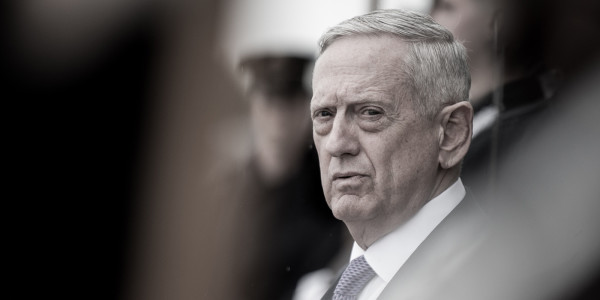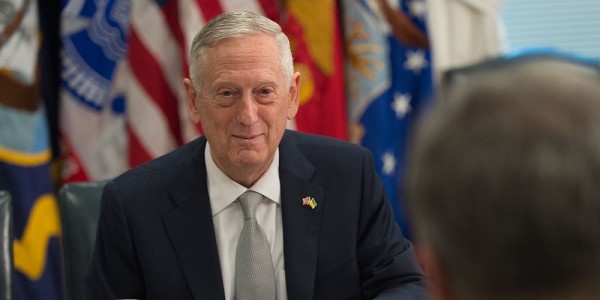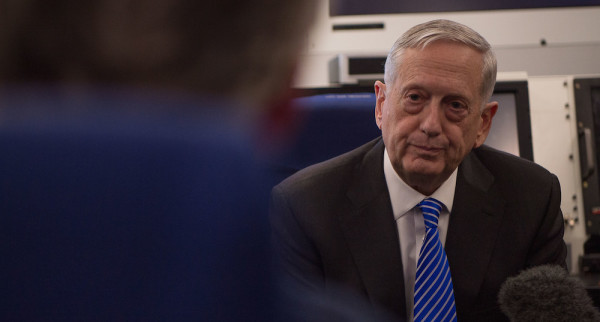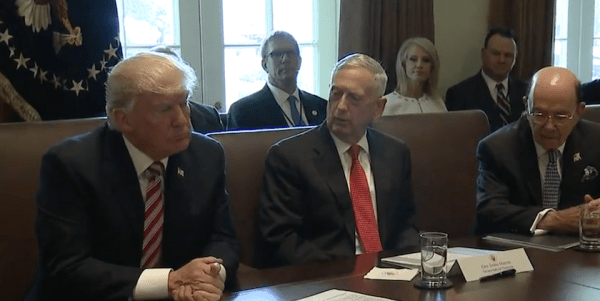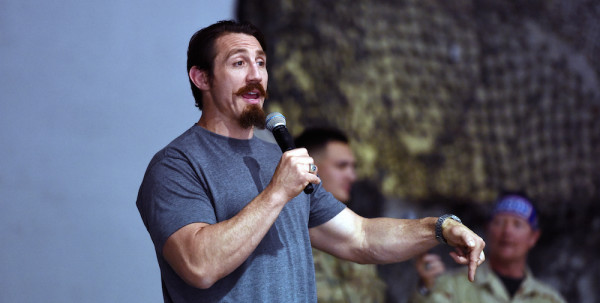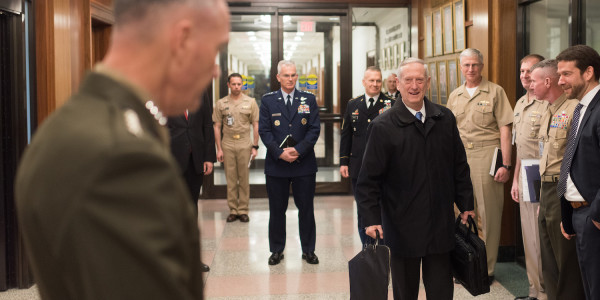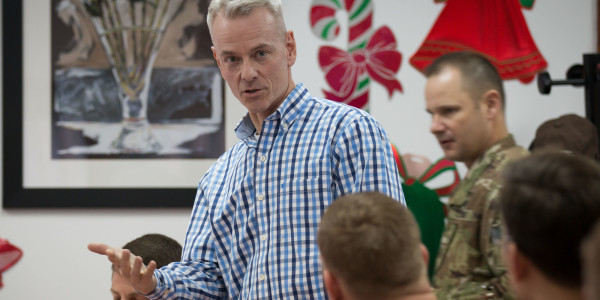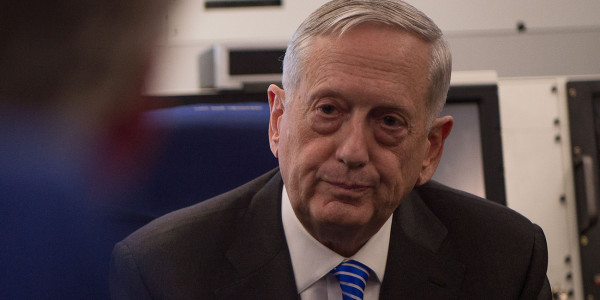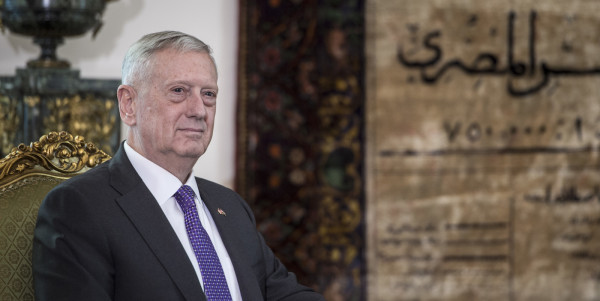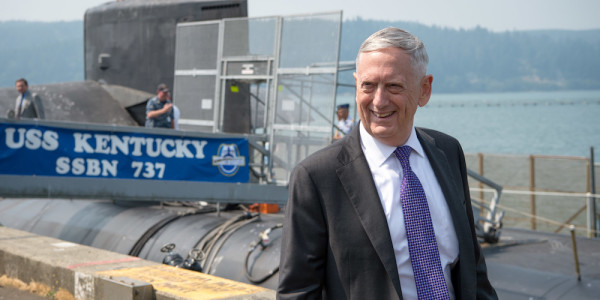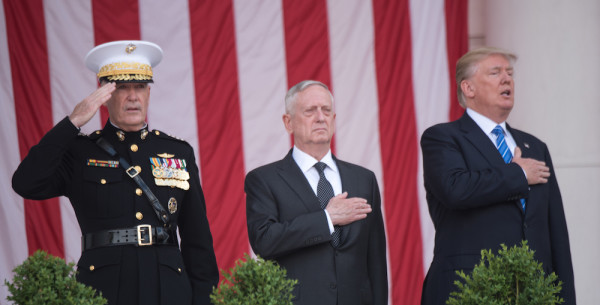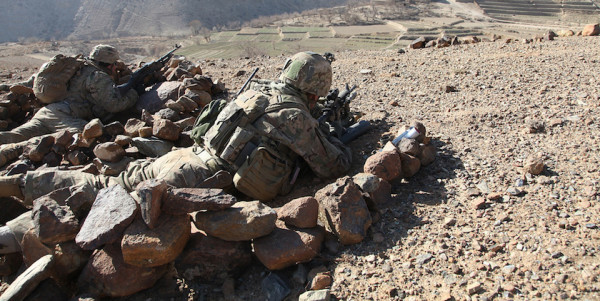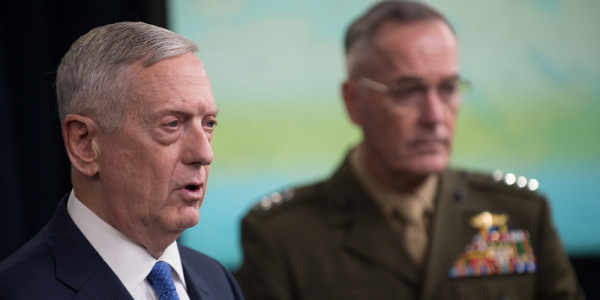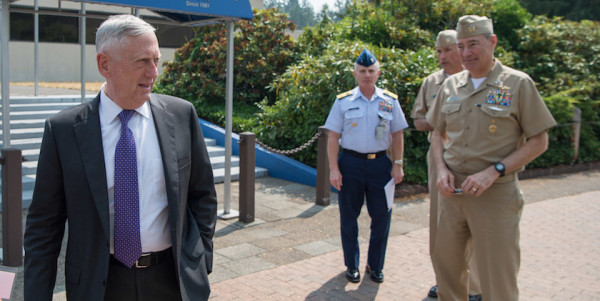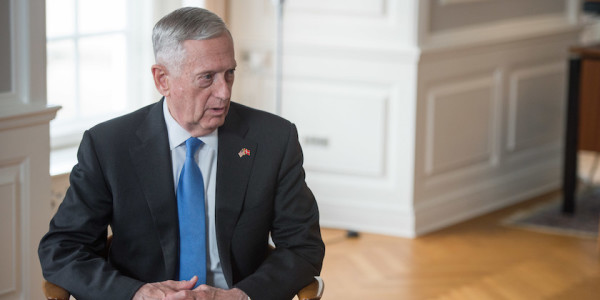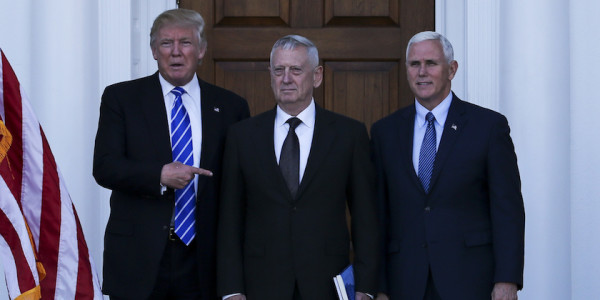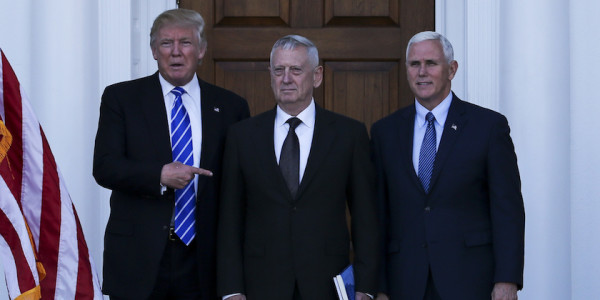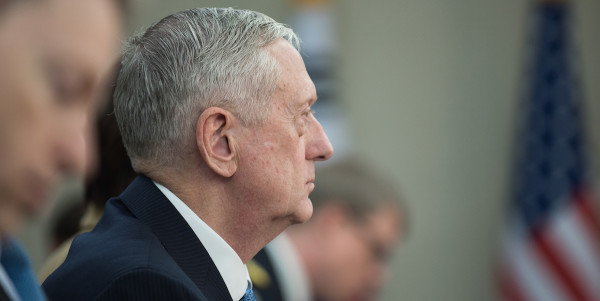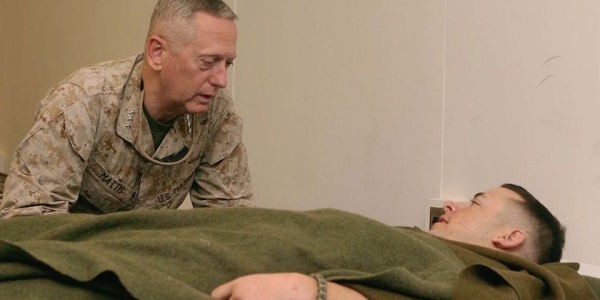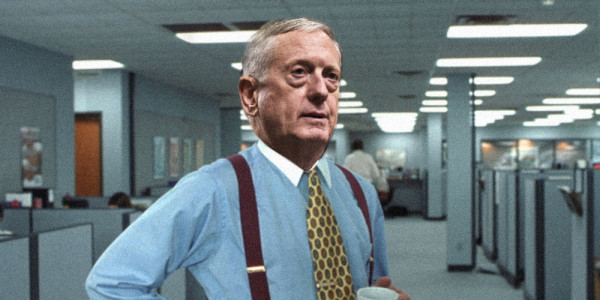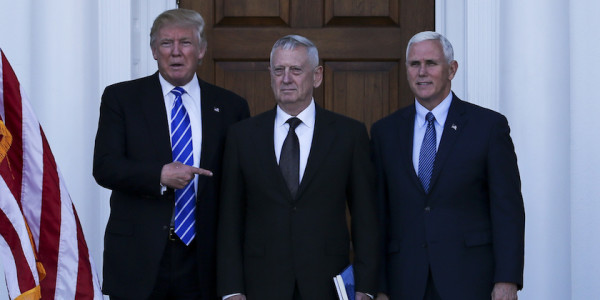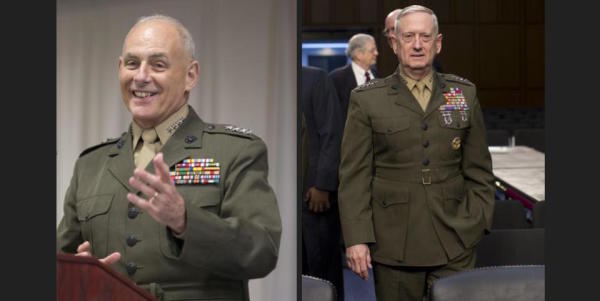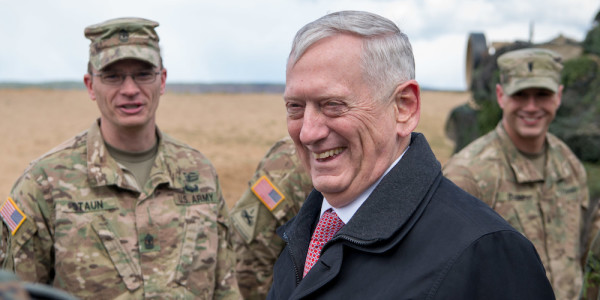Defense Secretary James Mattis, U.S. Marine Corps (retired), contains multitudes. An enigmatic figure lately spotted around the Pentagon’s E-ring looking out of sorts in a suit and tie, the DOD chief has earned praise not just as a blood-makes-the-grass-grow enemy-killer, but also as a well-read, soft-spoken “warrior-monk.” Depending which breathless wing of the media you consume, Mattis is either America’s best hope to check an erratic and unreasonable president, or the Trump administration’s angel of swift vengeance; a consummate diplomat, or a gruff jarhead who solves all his problems with maneuver and firepower; a deeply loyal subordinate, or a self-confident thorn in successive presidents’ sides.
While longtime conflict reporter Dexter Filkins’ massive profile of the defense secretary for The New Yorker’s May 29 issue doesn’t settle any of those famous Mattis contradictions, it sure gives us an interesting window into the mind of one of the most consequential leaders in U.S. military history. Which it should, considering it runs about 11,000 words.
Here are 10 of the most interesting Mattis takeaways from Filkins’ profile, “A Warrior in Washington.” There’s a little something in here for everyone, from the simple grunt to the strategic theorist:
1. He has a good comeback for people who call him a “warrior monk.”
Mattis tells people that “the only monastery he’d enjoy is one supplied with ‘beer and ladies,’” according to Filkins. But, the New Yorker writer points out, Mattis hardly ever drinks and doesn’t really have much of a social life. A retired Marine two-star who roomed with Mattis on Okinawa four decades ago, when they were lieutenants, tells Filkins: “He’s the most self-disciplined person I’ve ever known.”
2. He has many leather-bound books, probably.
Never married — a fiancee asked him to choose between her or the Corps, and he chose the Corps — Mattis’s nonexistent love life “allowed him a single-minded focus on his career and a passionate engagement with the military’s traditions and history,” Filkins writes. On deployments he carried a copy of Marcus Aurelius’ “Meditations,” a Stoic manifesto that’s been popular among naval officers for generations.
There’s plenty more where that came from. “Friends say that his library contains thousands of books,” Filkins reports, adding that the man President Trump calls “Mad Dog” has a veritable Oprah’s Book Club going on in his brain 24/7:
During an interview for an official history of the Marine Corps, in 2009, Mattis spoke of the ways that culture and history informed effective counter-insurgency campaigns: “You’re as well off if you’ve read ‘Angela’s Ashes’ and Desmond Tutu’s writings, and if you’ve studied Northern Ireland and the efforts for rapprochement there, and in South Africa following their civil war, as you are if you’ve read Sherman and, obviously, von Clausewitz.”
3. He thinks the biggest threat to America is cynicism.
What keeps the secretary of defense up at night? Is it Islamist terrorism? Russia? North Korea? None of these, Mattis tells Filkins; rather, his biggest fear is “the lack of political unity in America”:
The lack of a fundamental friendliness. It seems like an awful lot of people in America and around the world feel spiritually and personally alienated, whether it be from organized religion or from local community school districts or from their governments…
The nation’s political polarization is especially hard on veterans, Mattis says, because they’re used to putting that garbage aside for a common good:
“Go back to Ben Franklin—his descriptions about how the Iroquois Nations lived and worked together. Compare that to America today. I think that, when you look at veterans coming out of the wars, they’re more and more just slapped in the face by that isolation, and they’re used to something better. They think it’s P.T.S.D.—which it can be—but it’s really about alienation. If you lose any sense of being part of something bigger, then why should you care about your fellow-man?”
4. Obama probably ended Mattis’ military career over Iran.
When he took over U.S. Central Command in 2010, Mattis told President Obama he had three priorities: “Iran, Iran, and Iran.” The general felt, as many Iraq veterans did, that Iran never had to fully account for its encouragement of anti-coalition Shi’i militias, explosively-formed penetrators, and improvised rockets that routinely targeted U.S. service members at the height of the violence in Iraq.
Mattis’ years-long insistence on confronting Iranian-aided terrorism ultimately doomed him, according to Filkins:
In early 2013, as Mattis neared the end of his term, Obama announced that he would be retiring five months ahead of schedule. Mattis was not informed directly; he found out from a friend inside the Administration. “There was a perception among senior people that Mattis was particularly hard on the Iranians, that he didn’t necessarily see the need to engage them diplomatically,” a former senior White House official said. “There was a sense that things would be easier without his presence.”
Even so, Mattis has been surprisingly diplomatic about the Iran nuclear deal that Obama hammered out after his retirement: “I would not have signed the Iran deal, but it’s signed — we gave our word and we have to play the ball where it lies.”
5. He tried to bring the best and brightest to the Pentagon with him, and the Trump administration has stymied him in sometimes bizarre fashion.
How little does Mattis care about partisan politics? He tried to recruit well-respected Democrats and Republicans with national security expertise to fill all his top-level vacancies at the DOD. He has not been successful; most of the Republicans were blacklisted by the White House for opposing Trump’s candidacy last year, and most of the Democrats were scared off by the new president’s coterie of advisers.
At one point, Mattis asked Michele Flournoy — a prominent Democratic national security expert, rumored to have been Hillary Clinton’s top choice for SECDEF — to be his deputy. That didn’t go so well:
At Trump Tower, she was interviewed by a group of aides with no national-security experience. Among their first questions was “What would it take for you to resign?” Flournoy, alarmed, told Mattis that she couldn’t take the job.
To date, only one of 52 key executive positions under Mattis in DOD has a permanent appointee confirmed by the Senate. The vast majority of those vacancies don’t even have a nominee yet.
6. Mattis and his advisers predicted disaster in Iraq after the US pullout in 2011.
Filkins reports that Mattis “recounted a briefing that he had received from a senior intelligence analyst in November, 2011, a month before the last American troops departed”:
“I asked, ‘What happens if we pull our troops out?’ ” Mattis said. “The analyst told us that another group would appear. And, when it appears, it will be more vicious than any you’ve seen yet. She finally blurted out, ‘General, if you pull all our troops out, then, by the summer of 2014, all hell’s going to break loose.’ ”
7. Trump’s giving free rein to military commanders hasn’t always made Mattis happy.
President Trump has famously boasted of “taking the gloves off” his generals, giving them broad discretion to launch attacks without administration micromanagement. But Mattis found himself cut out of certain strikes, too. When the Air Force dropped a bunker-busting MOAB on an ISIS stronghold in Afghanistan last month, “Mattis was taken by surprise,” Filkins writes. “The decision was made by General John Nicholson, the lead commander in Afghanistan.” A senior government official told Filkins: “Mattis was frustrated by that.”
8. His blueprint for a ‘winnable’ American war is Gulf War I.
Something a lot of Mattis-watchers haven’t latched onto is that his strategic view of war is informed by some oldies but goodies — namely, the doctrines of former Joint Chiefs chairman Colin Powell and ex-defense secretary Caspar Weinberger, who both envisioned U.S. conflicts as massive, swift, and goal-oriented.
What would such a war look like? Filkins writes:
Mattis told me that the flaw in both Iraq and Afghanistan was that there was no “end-state”—the United States never knew exactly what it was fighting for. As a counterexample, he offered President George H. W. Bush, whose campaign to expel the Iraqi Army from Kuwait ended successfully, in 1991. “Bush said, ‘This will not stand,’ ” Mattis said. “We attacked. We overwhelmed them. And then when the right wing said, ‘March on Baghdad,’ he said, ‘Nope. No mission creep. We’re not going to change the strategy. We’ll lose the coalition. We have the whole world with us.’ Even Russia helped us on that.”
Okay. So what’s that end state look like in Iraq, Syria, Afghanistan, Yemen, Somalia, and everywhere else U.S. forces are breaking stuff these days? Simple, Mattis says: “I want to get to a point where the casualties are very low.”
9. For all the ‘Mad Dog’ mythology around him, Mattis wants a stronger State department than many in the Trump administration do.
“If you don’t fund the State Department fully, then I need to buy more ammunition ultimately,” Mattis tells Filkins. “The more that we put into the State Department’s diplomacy, hopefully the less we have to put into a military budget.”
Mattis makes a point of eating lunch with and Secretary of State Rex Tillerson at least once a week, and he’s been known to field calls from world leaders to reassure them after President Trump says something unsettling. “He managed to distance himself from everything President Trump had said without appearing disloyal,” the German defense minister said of one of her earliest conversations with Mattis.
10. He’s no optimist.
In a speech last year, Mattis didn’t exactly sugarcoat the direction things were going for American forces in the Middle East.
“The future is going to be ghastly,” he said. “It is not going to be pleasant for any of us.”
